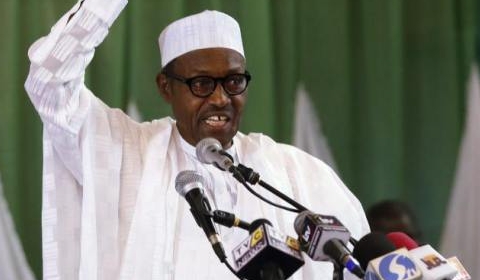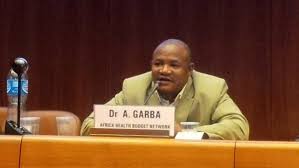I could feel the tension in the departure lobby of Aminu Kano International Airport while awaiting our domestic flight to Abuja, I found myself in the midst of many senior colleagues working in federal tertiary institutions including teaching hospitals and federal medical centers. As we boarded our plane, I noticed 2 medical directors of federal tertiary institutions, one federal university vice chancellor, a professor and a former teacher and a consultant working in a federal tertiary institution.
I exchanged pleasantries with all of them at the same time trying to respond to questions asked by some of them regarding 2016 federal budget. I was impressed by the level of their understanding on matters related to Immunization finances even though their work at tertiary institutions has little to do with financing immunization. “Aminu, we followed and read your health column in Daily Trust Newspaper every week and we were impressed that you have sustained this work for over a decade and we have leant a lot regarding financing immunization in your write ups and have noted the sustained advocacy by you to ensure federal government had allocated adequate budget for it. However in doing that the other aspect of health especially financing tertiary institutions isn’t gotten much advocacy attention by you and the likes.” Said one of them.
All through the 45 minutes trip I was engaged in discussion and by the time we were disembarking, I was better informed about the challenges also being faced by federal tertiary institutions as well as grasped another challenges being faced by “in- patients” whenever hospital workers embark in their numerous strikes abandoning their duty posts including emergency services. Our advocacy for adequate financing must be holistic and also encompassing and must take into consideration the many aspect of health so that the success of one sub-sector does not compromise another sub-sector.
Let’s do a small analysis of the 2016 budget. The Federal Budget to the Ministry of Health is about 4.13% of the National Budget with a recurrent expenditure of about 89% and capital expenditure of about 11%. The total budget is approximated at N250 billion with the capital budget approximated at N28.6 billion. What irked many pundits was that Immunization would be financed from the capital budget and it got about N12.9 billion which is about 45% of the overall capital budget. With this in mind, the 56 Federal Tertiary Health Institutions plus other federal health parastatals will be sharing the remaining 55% capital budget which is about N15.7 billion to embark in new capital projects. This is one of the numerous anomalies in the 2016 health sector budget that must be addressed either via supplementary budget or as we commence the preparation of the 2017 budget.
If we look at the Immunization budget in the National Primary Health Development Agency (NPHCDA) budget that has a total allocation of about N17.4 billion, Immunization alone will gulf N12.9 billion which is about 88.4 % of the NPHCDA capital budget and about 72.6% of the overall NPHCDA budget.
As I wrote in my article of 24th May 2016) ‘Inside President Buhari’s 2016 signed Health Budget’ that “we are delighted that in the signed budget N12.8 billion for vaccines, devices and operations programmes for Polio, Measles, and Yellow Fever etc is allocated. This is commendable against the background of dwindling financial resources in the country.”
It is important to note that as we are celebrating adequate budget for Immunization compared to other health sub-sectors, it wasn’t achieved without the tenacity of the national civil society organizations and the media. During the budget review by the national assembly N4billion was slashed from the 2016 budget as presented by President Buhari that was about 8 Billion Naira for Routine Immunization and Polio Eradication respectively. The budget was returned to the national assembly for consideration which led to setting up of a 20 member committee with the duty to conduct a review and make recommendations to the President. Following this development, the national CSOs in collaboration with NPHCDA had carried out series of rigorous advocacy via face to face press conferences and social media campaigns to influence the success we are witnessing today.
What lessons are there to learn?
The public health advocates including newspapers columnists and writers and the health sector leaders including leaders of the Federal Tertiary Health Institutions must find a common ground and platforms for continuous engagement and dialogue in charting a renewed health sector that caters for all constituencies
All comments to Dr Aminu Magashi Garba Coordinator Africa Health Budget Network & Publisher Health Reporters (healthweekly@yahoo.com)
.





